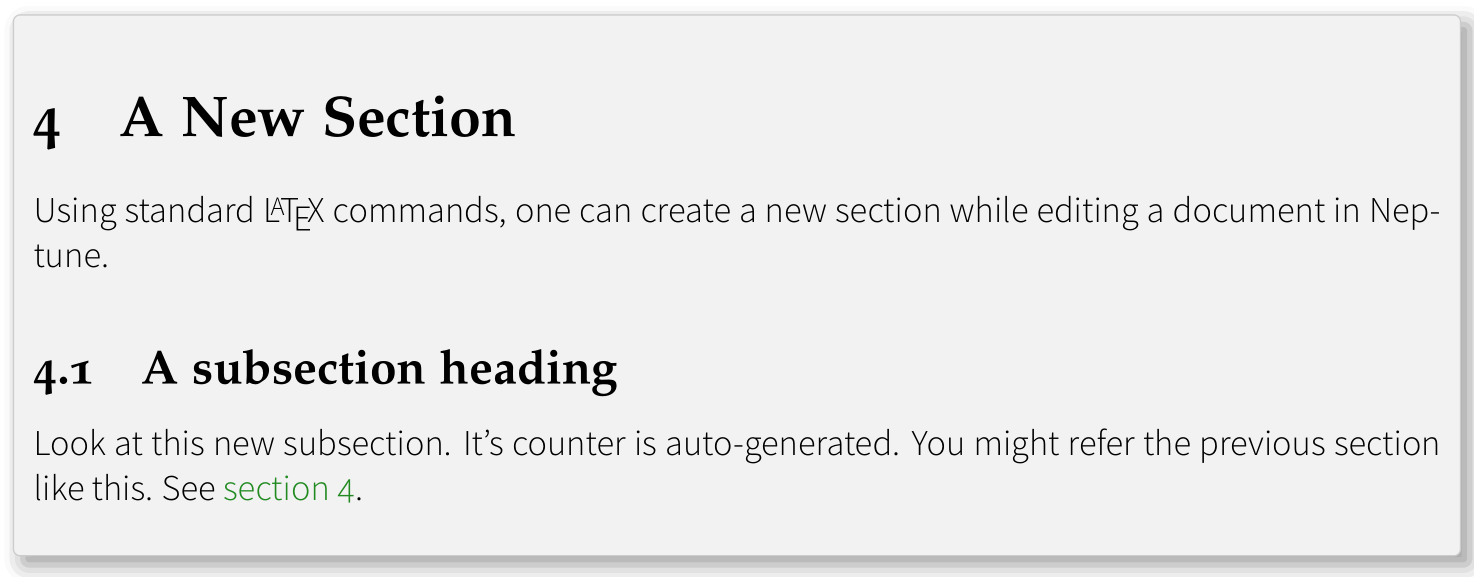Edit heading levels
For inserting a new section or any other sectional heading, standard LaTeX commands can be used. An example of the code is provided in the below verbatim:
\section{A New Section}
\xlabel{sec30}
Using standard \LaTeX{} commands, one can create a
new section while editing a document in Primo.
\subsection{A subsection heading}
\xlabel{sec30a}
Look at this new subsection. It’s counter is auto-generated.
You might refer the previous section like this. See \xref{sec30}.
By clicking on the tab Copy Edited PDF and Final PDF in the main menu bar, the author can load both the PDFs from pre- and post-edited LaTeX sources in the left and right sides of Primo window. Authors can check if their changes have correctly been reflected in the final versions.
Slightly modified \xlabel{...} is used in place of \label{...} with the
same functionality. In the same vein, \xref{...} takes the role of
\ref{...}. The cross-ref command, \xref{...} accepts more than one
label as its argument and the output will be sorted and compressed if
needed.
As you’re aware, two TeX runs are needed to fix cross-references to newly inserted objects correctly. You might see the output below:
